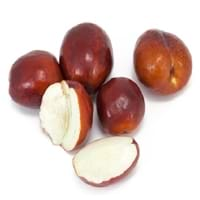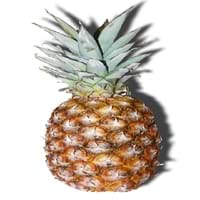Health Benefits
Cancer prevention, Diarrhea treatment, Improves muscular strength, Liver health, Maintains hormonal balance, Reduces nervous tension, Reduces blood circulation problems, Reduces stress, Regulation of heart rate, Treatment of hysteria
Asthma treatment, Bronchitis treatment, Cancer prevention, Heart care, Increases metabolic rate
General Benefits
Anti oxidant properties, Digestive aid, Flu treatment, Helps in weight loss, Strengthens bones, Treatment of common cold
Anti-inflammatory properties, Controls blood pressure, Digestive aid, Eye care, Healing of wounds, Maintains healthy cholesterol level, Strengthens bones, Treatment of sinusitis, Treatment of common cold
Skin Benefits
Heals sunburn, Hydrates skin, Reduces wrinkles, Skin rejuvenation, Skin revitalization
Anti-aging benefits, Brightens and lightens complexion, Skin cleansing, Treatment of acne, Treatment of dark spots
Hair Benefits
Promotes longer and healthier hair, Protects hair
Prevents hair loss
Allergy Symptoms
Abdominal pains, Breathing difficulty, Diarrhea, Hives, Itching in eyes, Itching of nose, Nasal congestion, Redness of eyes, Runny nose, Sneezing, Wheezing
Abdominal pains, Itching in tongue and other parts of mouth, Sneezing, Swelling, Tingling sensation in wrist and face, Vomiting, Wheezing
Side Effects
Decrease in blood sugar levels, Intense headache
Causes swollen mouth, Allergic reaction, Diarrhoea, Nausea, Skin rash, Vomiting
Lactating Women
Not Available
No
Best Time to Eat
As a snack in the late afternoon, Don't consume at night and before bed, Morning time (before lunch), Strictly avoid empty stomach
Best if taken as a breakfast (or empty stomach), As a snack in the late afternoon, Eat the fresh ones, avoid mixing with any other foods, don't eat after meal., Morning time (before lunch)
Vitamin B5 (Pantothenic Acid)
Not Available
Vitamin B9 (Folic acid)
Not Available
Vitamin C (Ascorbic Acid)
Vitamin E (Tocopherole)
Not Available
Vitamin K (Phyllochinone)
Not Available
Lutein+Zeaxanthin
Not Available
Phytosterol
Not Available
Calories in Fresh Fruit with Peel
Not Available
Calories in Fresh Fruit without Peel
Not Available
Calories in Frozen Form
Not Available
Calories in Canned Form
Not Available
Calories in Juice
Not Available
Calories in Jam
Not Available
Calories in Pie
Not Available
Type
Tree fruit
Berry, Tropical
Season
Autumn, Summer
Autumn
Varieties
Honey Jar, Sugar Cane, Li, Shanxi Li, Sherwood, Chico, Silverhill, Tigertooth, Winter Delight and Lang
Smooth Cayenne, Abacaxi, Red Spanish and Queen
Color
Green, Red, Yellow
Yellow
Inside Color
White
Yellow
Taste
Sweet
Strong, Sweet, Tart
Origin
Syria
Central America, South America
Grows on
Trees
Not Available
Soil Type
Sandy, Well-drained
Clay, Sandy loam, Well-drained
Climatic Conditions
Warm to hot climate
Hot, Sunny
Facts about
- Pigment extracted from Indian jujube is used for silk dyeing in Burma.
- In Korea, jujube wood is used to make wind instrument taepyeongso.
- Fresh jujube is known as Chinese apple & dried form is called as Chinese date.
- A single pineapple takes 3 years to reach maturation.
- Pineapple is not an apple, but is actually a berry.
- The name is with reference to its resemblance to pine cones.
- Pineapple is sweeter if scales are more.
Top Producer
China
Costa Rica
Other Countries
Bangladesh, India, Iran, Korea, Lebanon, Pakistan
Brazil, India, Philippines, Thailand
Top Importer
United States of America
United States of America
Top Exporter
China
Costa Rica
Botanical Name
Ziziphus zizyphus
Ananas comosus
Synonym
Ziziphus jujuba or Ziziphus mauritania or Zizyphus jujuba
Ananas sativus
Subkingdom
Tracheobionta
Tracheobionta
Division
Magnoliophyta
Magnoliophyta
Class
Magnoliopsida
Liliopsida
Subclass
Rosidae
Commelinidae
Family
Rhamnaceae
Bromeliaceae
Species
Z. zizyphus
A. comosus
Generic Group
Not Available
Pineapple
Difference Between Jujube and Pineapple
We might think that Jujube and Pineapple are similar with respect to nutritional value and health benefits. But the nutrient content of both fruits is different. Jujube and Pineapple Facts such as their taste, shape, color, and size are also distinct. The difference between Jujube and Pineapple is explained here.
The amount of calories in 100 gm of fresh Jujube and Pineapple with peel is 79.00 kcal and Not Available and the amount of calories without peel is Not Available and 50.00 kcal respectively. Thus, Jujube and Pineapple belong to High Calorie Fruits and Low Calorie Fruits category.These fruits might or might not differ with respect to their scientific classification. The order of Jujube and Pineapple is Rosales and Poales respectively. Jujube belongs to Rhamnaceae family and Pineapple belongs to Bromeliaceae family. Jujube belongs to Ziziphus genus of Z. zizyphus species and Pineapple belongs to Ananas genus of A. comosus species. Beings plants, both fruits belong to Plantae Kingdom.









